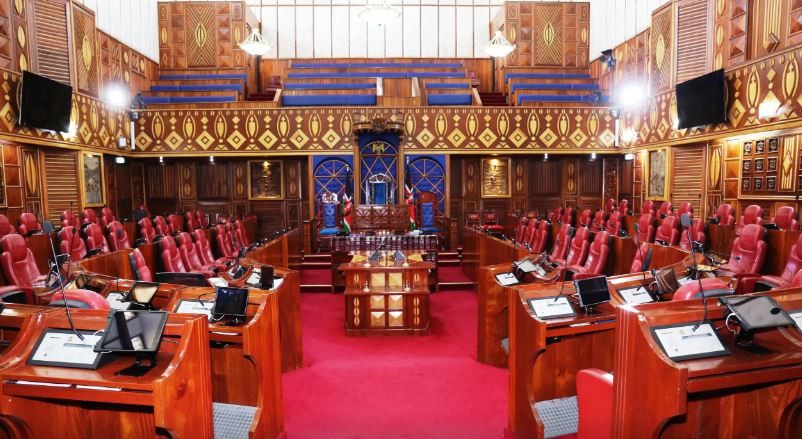Nigerian Banks' Interest Expense Soars 43% to N1.9tn
Nine major Nigerian banks recorded a combined interest expense of N1.90tn in the first quarter of 2025, representing a 43.2 per cent increase from the N1.33tn posted in the same period of 2024, based on The PUNCH’s analysis of their unaudited financial statements.
Over the same period, their total interest income stood at approximately N4.18tn. According to the Corporate Finance Institute, interest income is the amount paid to an entity for lending its money or letting another entity use its funds.
Interest expense is the cost a company incurs for borrowing money. In the context of banks, interest expense refers to the amount they pay to customers and institutions for using their funds, such as interest paid on customer deposits.
In the period under review, Access Holdings posted the highest interest income of N964.6bn in Q1 2025, up 58.6 per cent from N608.1bn in the first quarter of 2024. However, its interest expense also increased sharply by 71.3 per cent to N760.47bn from N443.88bn, putting pressure on net interest margins.
Zenith Bank recorded a 71.5 per cent growth in interest income to N837.6bn from N488.5bn. Its interest expense rose by 35.3 per cent to N246.45bn from N182.10bn, reflecting increased funding costs amid a higher lending environment.
First HoldCo Plc saw its interest income rise 40 per cent to N625.3bn from N446.1bn. Interest expense climbed 18.6 per cent to N260.09bn from N219.30bn, indicating a moderate rise in the cost of funds.
United Bank for Africa reported interest income growth of 36 per cent to N599.8bn from N440.8bn. Its interest expense surged 77 per cent to N247.96bn from N140.09bn, reflecting aggressive funding strategies.
Guaranty Trust Holding Company earned N386bn in interest income, up 41 per cent from N273.2bn. Interest expense increased 45.4 per cent to N79.03bn from N54.35bn, showing rising costs on deposits and borrowings.
Fidelity Bank posted interest income of N256.1bn, up 58 per cent from N162bn. Interest expense also rose by 28.6 per cent to N90.65bn from N70.50bn, suggesting better asset yields alongside higher funding costs.
Stanbic IBTC Holdings recorded a 55.8 per cent increase in interest income to N180.5bn from N115.8bn. Notably, its interest expense declined by 21.4 per cent to N30.58bn from N38.90bn, indicating improved funding efficiency.
FCMB Group reported interest income growth of 71 per cent to N214.4bn from N125.4bn. Its interest expense jumped 81.2 per cent to N126.87bn from N70bn, reflecting higher borrowing costs amid expansion.
Wema Bank saw interest income rise 59 per cent to N110.3bn from N69.4bn. Interest expense also increased by 24 per cent to N53.74bn from N43.32bn, consistent with growing deposit costs.
Commenting the Director and Chief Economist at Proshare Nigeria LLC, Teslim Shitta-Bey, has emphasised that net interest income remains the most crucial metric for evaluating Nigerian banks’ operational health, rather than just interest expenses or tax liabilities.
“First and foremost, interest expense by itself does not directly impact a bank’s lending capacity,” Shitta-Bey said. “What matters most to banks is their net interest income, the actual spread between what they earn and what they pay out. Tax is not an operational issue; as long as a bank is profitable, it will pay tax accordingly.”
On concerns about rising interest expenses amid liquidity challenges, Shitta-Bey pointed out that liquidity conditions, rather than just borrowing costs, determine banks’ capacity to lend. “With the current state of private placements and strong capital bases, many Nigerian banks are quite liquid. Some even have higher share capital than the Central Bank of Nigeria’s minimum requirements,” he noted.
Shitta-Bey also highlighted the role of key regulatory tools such as the Monetary Policy Rate and Cash Reserve Ratio.
“The MPR influences borrowing costs in the economy, while the CRR acts as a liquidity control mechanism. Banks maintain elevated share capital to ensure they have adequate shelter against risk, safeguarding financial stability,” he explained.
In his view, the bank’s strong capital positions and regulatory safeguards provide a cushion that supports lending activities despite fluctuations in interest expenses.









